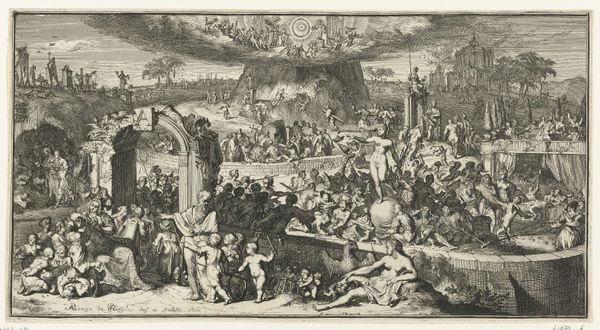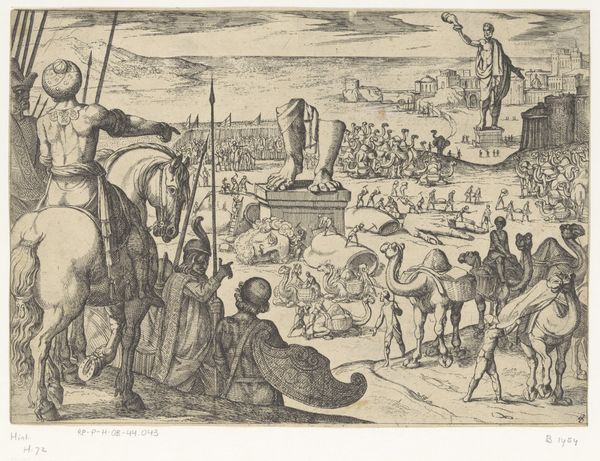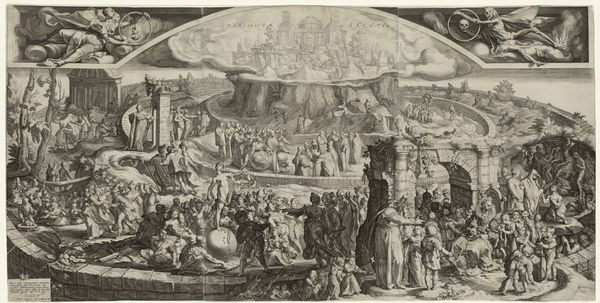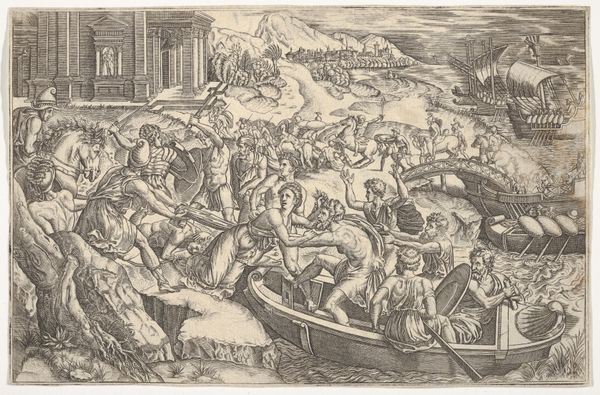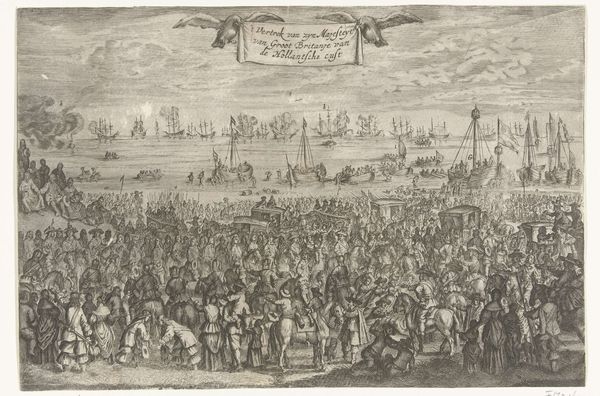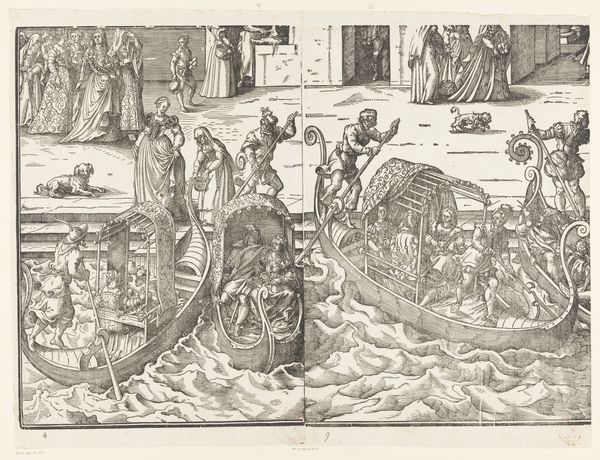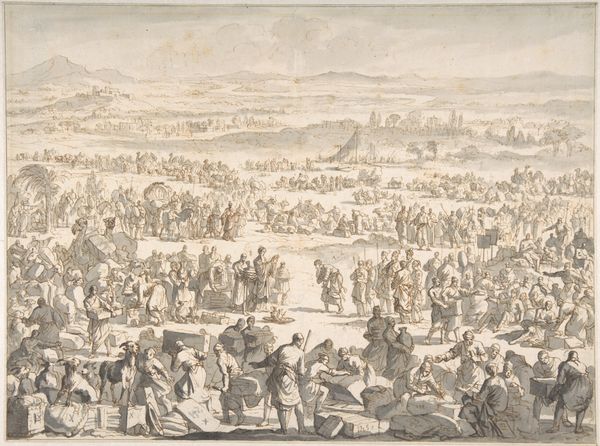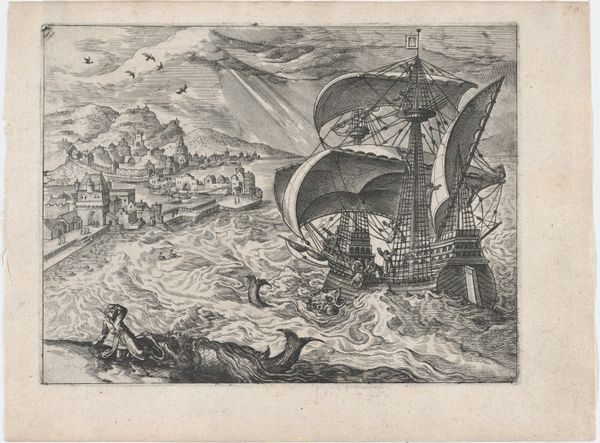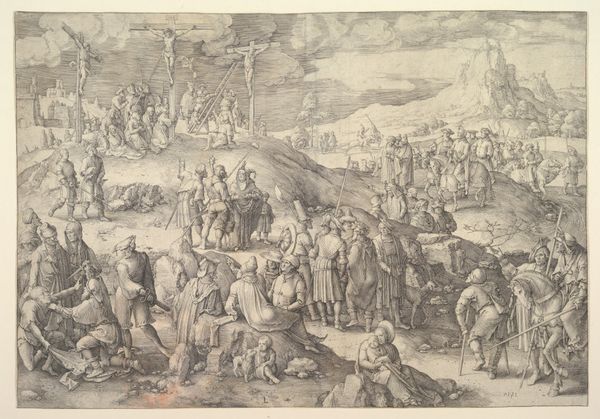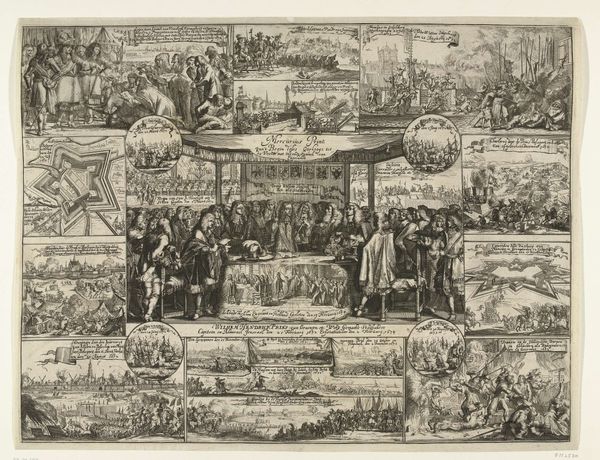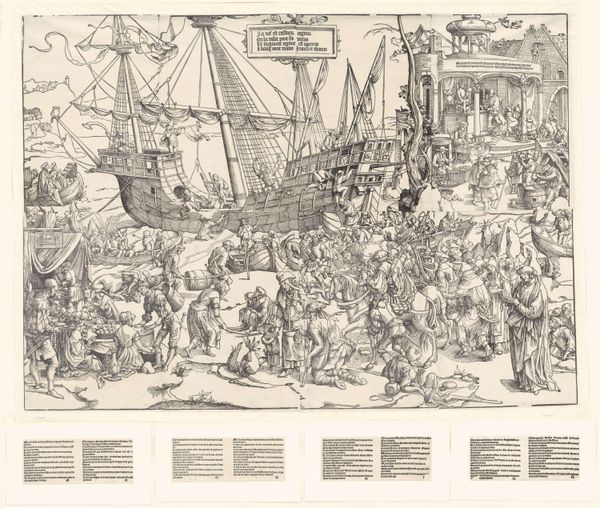
drawing, print, engraving
#
drawing
#
ink drawing
#
pen drawing
# print
#
mannerism
#
cityscape
#
history-painting
#
northern-renaissance
#
engraving
Dimensions: Sheet: 9 3/8 × 16 1/4 in. (23.8 × 41.3 cm)
Copyright: Public Domain
Editor: This is "The Fall of Babylon," a 1569 engraving by Philips Galle. The scene feels so dense, filled with architectural detail, and it looks as though biblical chaos has broken loose. How would you interpret this work, and what symbols stand out? Curator: What jumps out at me is Galle’s careful use of both earthly and celestial symbols to depict this calamitous moment. The figures in the foreground appear swept up in conflicting emotions. Look at their gestures, suggesting despair, surrender, even defiance. Do you see how the architectural motifs morph? Editor: I notice what you mean about conflicting emotion now that you point it out. Yes, some figures cower in the front while others behind them walk onward looking forward as if ignoring those who cower, despite the dire circumstances. Also, there seems to be architectural order at the foundation that dissolves into flames toward the back of the illustration, implying how Babylon becomes a disordered place. Curator: Precisely! Galle plays with established iconographic codes to comment on Babylon’s moral decline. For example, Babylon, as a cultural center and historical reality, represents not just a literal city, but something deeply embedded within the cultural psyche, and perhaps, within our individual subconscious, serving as an example of corrupt or excessive earthly power. Editor: Interesting. It’s as though the city becomes a stage for inner psychological struggles, using recognizable architectural symbols to tell a complex story. Curator: Exactly. Consider, too, the figures floating above – they echo both divine judgment, and perhaps, the shifting psychological states within the populace itself. What memories might such images evoke? Editor: I suppose this work is about both history and universal struggles that people deal with constantly through time. It is still relevant in that sense. Curator: Indeed, it provides fertile ground to consider collective memory and shared symbols, and Galle taps into the core of this powerful cultural narrative, making it, and keeping it, potent and meaningful across eras.
Comments
No comments
Be the first to comment and join the conversation on the ultimate creative platform.

